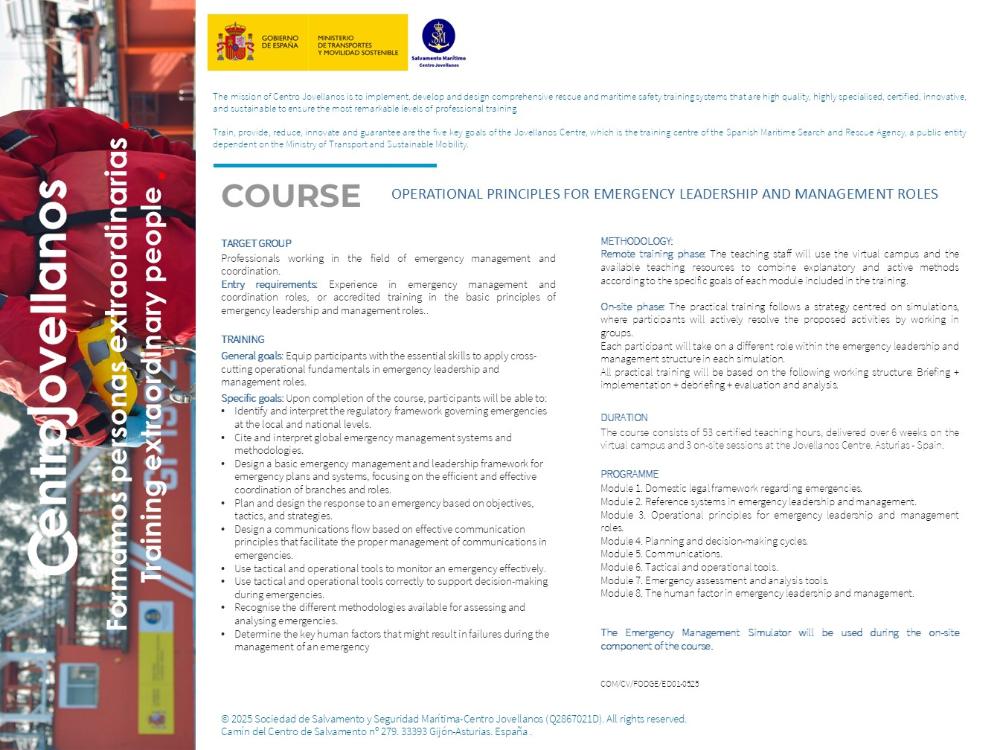Professionals working in the field of emergency management and coordination.
- Entry requirements: Experience in emergency management and coordination roles, or accredited training in the basic principles of emergency leadership and management roles.
General goals: Equip participants with the essential skills to apply cross-cutting operational fundamentals in emergency leadership and management roles.
Specific goals: Upon completion of the course, participants will be able to:
• Identify and interpret the regulatory framework governing emergencies at the local and national levels.
• Cite and interpret global emergency management systems and methodologies.
• Design a basic emergency management and leadership framework for emergency plans and systems, focusing on the efficient and effective coordination of branches and roles.
• Plan and design the response to an emergency based on objectives, tactics, and strategies.
• Design a communications flow based on effective communication principles that facilitate the proper management of communications in emergencies.
• Use tactical and operational tools to monitor an emergency effectively.
• Use tactical and operational tools correctly to support decision-making during emergencies.
• Recognise the different methodologies available for assessing and analysing emergencies.
• Determine the key human factors that might result in failures during the management of an emergency
Remote training phase: The teaching staff will use the virtual campus and the available teaching resources to combine explanatory and active methods according to the specific goals of each module included in the training.
On-site phase: The practical training follows a strategy centred on simulations, where participants will actively resolve the proposed activities by working in groups.
Each participant will take on a different role within the emergency leadership and management structure in each simulation.
All practical training will be based on the following working structure: Briefing + implementation + debriefing + evaluation and analysis.
Module 1. Domestic legal framework regarding emergencies.
Module 2. Reference systems in emergency leadership and management.
Module 3. Operational principles for emergency leadership and management roles.
Module 4. Planning and decision-making cycles.
Module 5. Communications.
Module 6. Tactical and operational tools.
Module 7. Emergency assessment and analysis tools.
Module 8. The human factor in emergency leadership and management.
The Emergency Management Simulator will be used during the on-site component of the course.
The course consists of 53 certified teaching hours, delivered over 6 weeks on the virtual campus and 3 on-site sessions at the Jovellanos Centre. Asturias - Spain.

